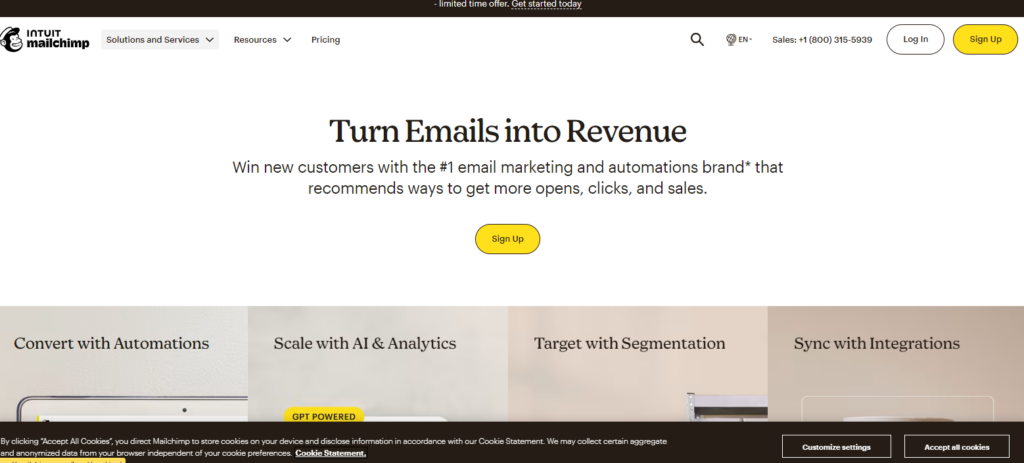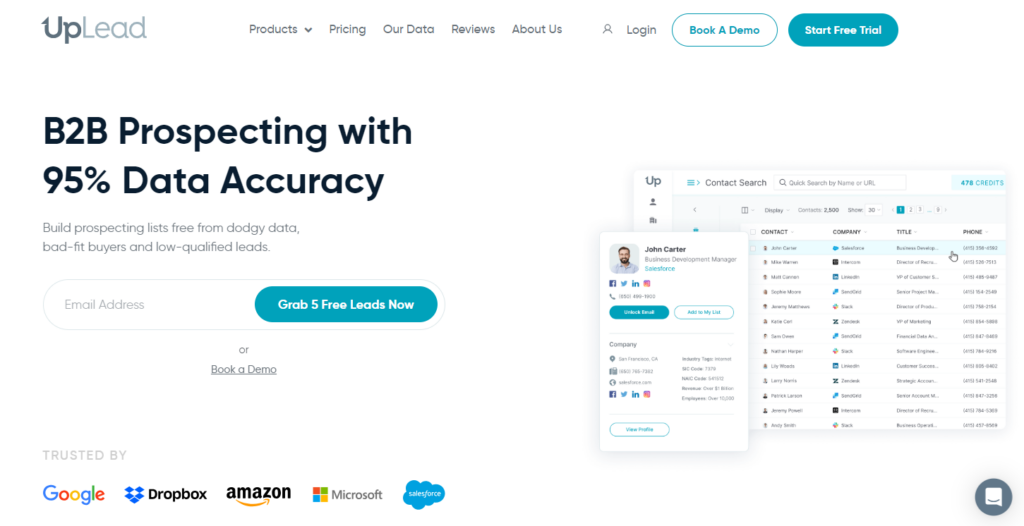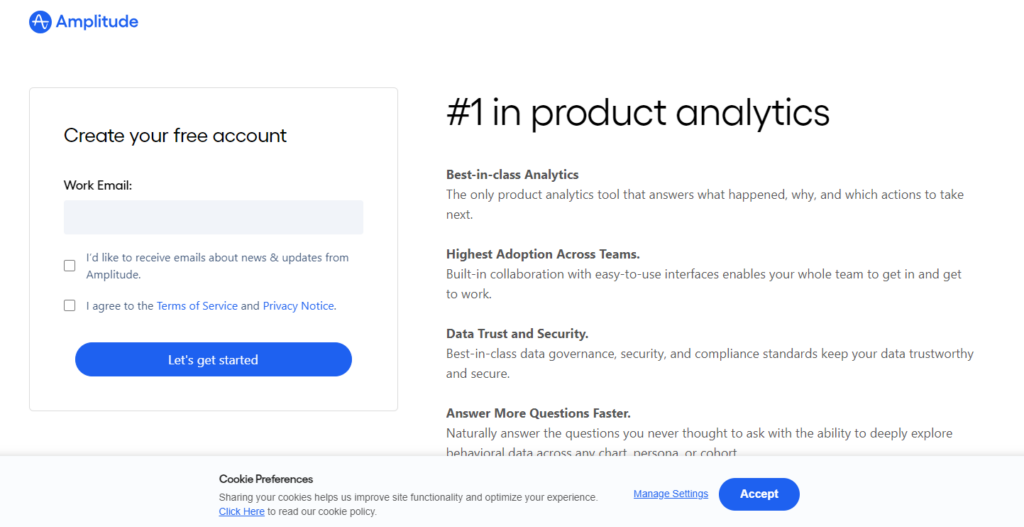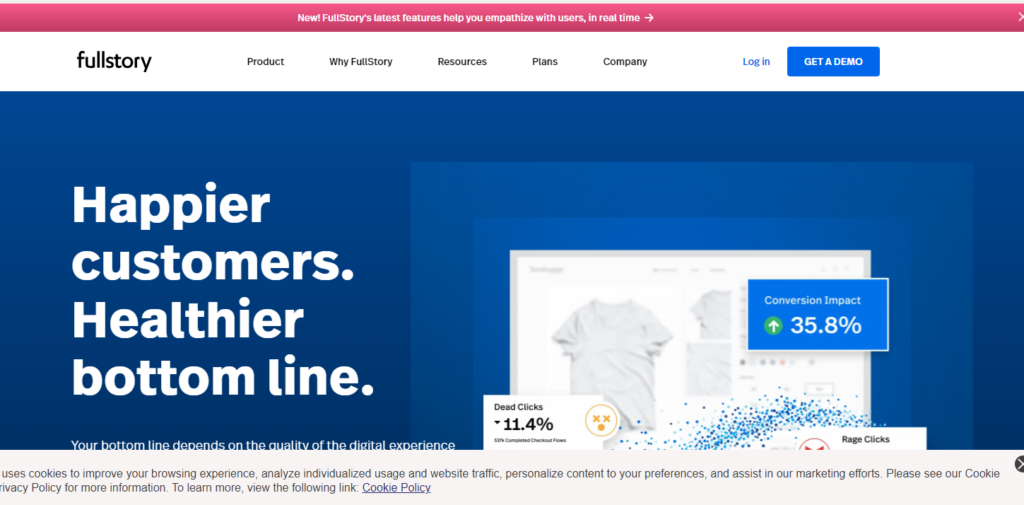8 Free Market Segmentation Tools
Market segmentation is a fundamental concept in the field of marketing and business strategy. It is the process of dividing a broader target market into distinct, manageable segments based on common characteristics, needs, and behaviors. In this article, we will delve into the world of market segmentation and explore the various tools available for this purpose, with a focus on free options.
What is Market Segmentation?
Market segmentation is the practice of breaking down a heterogeneous market into smaller, more homogeneous segments or groups. Each of these segments shares similar traits, interests, and purchasing behaviors. The idea behind market segmentation is to enable businesses to tailor their marketing efforts and strategies to meet the specific needs and preferences of each segment. By doing so, they can better reach their target audience, enhance customer satisfaction, and ultimately drive business growth.
Importance of Market Segmentation
Market segmentation is crucial for several reasons:
- Targeted Marketing: Segmentation allows businesses to target their marketing efforts more precisely. Instead of using a one-size-fits-all approach, they can tailor their messages to resonate with each segment, increasing the chances of engagement and conversion.
- Improved Product Development: Understanding the unique needs of different segments helps in creating products or services that cater to those needs effectively. This leads to higher customer satisfaction and loyalty.
- Resource Efficiency: Segmentation helps in allocating resources wisely. Businesses can focus their resources on segments with the most potential for profitability, reducing wastage and optimizing marketing budgets.
- Competitive Advantage: A deep understanding of customer segments can give a business a competitive edge. It allows them to identify and exploit market gaps that competitors may overlook.
- Customer Retention: By addressing the specific needs and concerns of each segment, businesses can improve customer retention rates. Satisfied customers are more likely to remain loyal to a brand.
The Role of Market Segmentation Tools
Market segmentation, though immensely valuable, can be a complex and data-intensive process. This is where market segmentation tools come into play. These tools are software or platforms designed to assist businesses in the segmentation process. They leverage data analysis, customer insights, and other techniques to help identify and define market segments accurately. The role of these tools includes:
- Data Collection and Analysis: Market segmentation tools gather and analyze vast amounts of data, including demographic, psychographic, and behavioral data, to identify relevant segments.
- Segment Identification: They assist in identifying distinct market segments based on common attributes, behaviors, or preferences.
- Customization: These tools enable businesses to tailor their marketing strategies, messaging, and product offerings to match the unique characteristics of each segment.
- Performance Measurement: Market segmentation tools often come with analytics features that allow businesses to track the performance of their segmented marketing efforts.
Overview of the Article
In this article, we will explore 10 free market segmentation tools that businesses can utilize to enhance their marketing strategies. We will provide an in-depth analysis of each tool, highlighting their key features, pros and cons, and user reviews (if available). Additionally, we will offer practical insights on how to effectively use these tools, along with real-world examples and case studies demonstrating their application.
Furthermore, we will discuss the challenges and limitations associated with free market segmentation tools, including data privacy concerns and scalability issues. By the end of this article, readers will have a comprehensive understanding of the importance of market segmentation and a valuable resource for selecting the right tools to implement this strategy effectively.
Criteria for Selecting Market Segmentation Tools
When choosing the right market segmentation tools for your business, it’s essential to consider several key criteria to ensure they align with your objectives and provide the functionality you need. Here are five critical criteria for selecting market segmentation tools:
A. Ease of Use
- User-Friendly Interface: The tool should have an intuitive and user-friendly interface that doesn’t require extensive training to navigate and utilize effectively.
- Accessibility: It should be easily accessible to team members across different departments, promoting collaboration and ease of adoption.
- Documentation and Support: Comprehensive documentation and reliable customer support can be vital for resolving issues and maximizing the tool’s potential.
B. Data Accuracy
- Data Sources: Evaluate the sources of data the tool uses for segmentation. High-quality data from reputable sources is essential for accurate results.
- Data Validation: Look for tools that incorporate data validation and cleansing processes to ensure the accuracy of the information used for segmentation.
- Regular Updates: Ensure that the tool receives regular updates and maintains data accuracy as market dynamics change.
C. Customization Options
- Segmentation Models: The tool should offer various segmentation models and the flexibility to create custom segments tailored to your specific business needs.
- Variable Selection: Check if the tool allows you to choose from a wide range of variables, including demographics, psychographics, and behavioral factors, to create precise segments.
- Scalability: Consider whether the tool can adapt to your growing business and evolving segmentation requirements without limitations.
D. Integration Capabilities
- Compatibility: Ensure that the tool can seamlessly integrate with your existing marketing, CRM, and analytics systems, enhancing data flow and reducing manual data entry.
- API Support: Tools with Application Programming Interface (API) support provide greater flexibility for integrating with third-party applications.
- Data Security: Evaluate the tool’s data security measures to protect sensitive customer information when integrating with other systems.
E. Scalability
- Volume Handling: Assess the tool’s ability to handle large volumes of data, especially if your business deals with extensive customer databases.
- Performance: Scalable tools should maintain high performance as your data and segmentation needs grow.
- Cost Scaling: Consider how pricing scales with increased usage and data storage requirements to ensure it remains cost-effective.
By carefully evaluating market segmentation tools based on these criteria, businesses can make informed decisions and choose tools that not only meet their current needs but also provide room for growth and adaptation in an ever-evolving market landscape. These criteria will help ensure that the selected tools are user-friendly, accurate, customizable, and seamlessly integrated into existing workflows, ultimately contributing to more effective market segmentation strategies.
Top 8 Free Market Segmentation Tools
1. MailChimp

MailChimp is a highly popular and user-friendly email marketing platform that is widely used by businesses and organizations to create and manage email campaigns, newsletters, and marketing automation. Founded in 2001, MailChimp has grown to become one of the most recognized and trusted email marketing services in the world.
Key Features:
- List Segmentation: MailChimp allows users to segment their email lists based on various criteria such as location, behavior, purchase history, and more. This segmentation feature enables businesses to send highly targeted and personalized email content to specific groups of subscribers.
- Behavioral Targeting: With MailChimp, you can create automated email campaigns that respond to subscriber actions and behaviors. For example, you can set up triggered emails to welcome new subscribers, follow up on abandoned carts, or send personalized product recommendations based on previous interactions.
- Integration: MailChimp seamlessly integrates with a wide range of e-commerce platforms, CRMs (Customer Relationship Management), and other marketing tools. This integration simplifies data synchronization and allows for a more streamlined marketing workflow.
- Automation: The platform offers robust marketing automation capabilities, making it easy to set up automated email series, drip campaigns, and personalized customer journeys. This automation can save businesses time and increase engagement with their audience.
- Analytics: MailChimp provides detailed analytics and reporting tools to help users track the performance of their email campaigns. You can measure open rates, click-through rates, conversion rates, and more, enabling you to refine your marketing strategies based on real-time data.
Pros:
- User-Friendly Interface: MailChimp’s user interface is known for its simplicity and ease of use. Users with varying levels of technical expertise can navigate and utilize the platform effectively.
- Behavioral Targeting: The ability to send automated, behavior-triggered emails helps businesses engage with their audience at the right time with the right message.
- Integration: MailChimp’s wide range of integrations ensures compatibility with existing tools and platforms, making it versatile for various business needs.
Cons:
- Limited Free Features: While MailChimp does offer a free plan, more advanced segmentation and automation features are often available only in paid plans.
Pricing:
MailChimp offers a free plan with basic features, making it accessible to small businesses and startups. Paid plans start at $3,362 per month and vary in price depending on the number of subscribers and additional features required. Paid plans offer more advanced segmentation and automation capabilities, making them suitable for businesses with more extensive marketing needs.
2. Baremetrics
Baremetrics is a subscription analytics and revenue analytics platform that provides businesses with valuable insights into their subscription-based revenue and customer data. Founded in 2013, Baremetrics has become a trusted tool for subscription-based businesses to monitor, analyze, and optimize their subscription metrics.
Key Features:
- Subscription Analytics: Baremetrics offers a comprehensive set of tools for tracking and analyzing subscription metrics. Businesses can monitor critical data points such as Monthly Recurring Revenue (MRR), Churn Rate, Customer Lifetime Value (CLV), and more. These metrics help in understanding the health and growth of subscription-based revenue streams.
- Customer Segmentation: Baremetrics allows users to segment their subscribers based on various criteria, such as plan type, geography, signup date, and more. Segmentation helps in targeting specific customer groups for tailored marketing campaigns and retention efforts.
- Integration: Baremetrics integrates seamlessly with popular subscription billing platforms like Stripe, Braintree, and others. This integration automates data collection, ensuring that revenue and customer data are always up-to-date.
- Automated Reports: Users can set up and receive automated reports on key subscription metrics. These reports provide actionable insights into trends, allowing businesses to make data-driven decisions.
Pros:
- Subscription Insights: Baremetrics provides deep insights into subscription-based businesses, helping businesses understand their financial health and growth potential.
- Customer Segmentation: The ability to segment customers based on various criteria allows for precise targeting and personalized marketing efforts.
- Integration: Integration with subscription billing platforms simplifies data collection and ensures data accuracy.
Cons:
- Limited Free Plan: While Baremetrics offers a free trial, its paid plans start at $50 per month, which may be a barrier for small startups with tight budgets.
Pricing:
Baremetrics offers a free trial to get started. Pricing for paid plans starts at $108 per month and varies based on the number of integrations, the volume of tracked metrics, and additional features. Paid plans provide access to more advanced analytics, segmentation capabilities, and reporting tools, making them suitable for businesses looking to gain deeper insights into their subscription-based revenue.
3. UpLead

UpLead is a powerful lead generation platform designed to assist businesses in finding and segmenting B2B (business-to-business) leads based on various criteria. Whether you are looking to expand your customer base, identify potential business partners, or reach out to decision-makers in specific industries, UpLead provides the tools to help you access accurate and up-to-date lead data.
Key Features:
- Lead Search: UpLead offers an extensive database of B2B leads that you can search based on multiple criteria, including industry, company size, job title, location, and more. This search functionality allows you to narrow down your target audience effectively.
- Data Enrichment: To enhance your segmentation capabilities, UpLead provides data enrichment services. This means that you can append additional information to your lead data, such as company information, contact details, and social media profiles. Enriched data helps you tailor your marketing efforts and messages more precisely.
- List Building: UpLead enables you to create custom lead lists based on specific segmentation criteria. For example, you can build a list of potential clients in a particular industry or a list of decision-makers within a certain geographical region.
- Integration: UpLead offers seamless integration with popular CRM (Customer Relationship Management) systems, marketing automation tools, and other data management platforms. This integration ensures that your lead data is synchronized across your tech stack, streamlining your marketing and sales processes.
Pros:
- Extensive Lead Database: UpLead provides access to a vast database of B2B leads, allowing for effective segmentation and targeting.
- Data Enrichment: The data enrichment feature enhances lead profiles with valuable information, making your segmentation efforts more precise.
- Integration: Seamless integration with CRM and marketing tools simplifies lead management and data synchronization.
Cons:
- Paid Service: While UpLead offers a free trial, its paid plans start at $99 per month, which may be a consideration for businesses with limited budgets.
Pricing:
UpLead offers a free trial to explore its features. Pricing for paid plans starts at $74 per month and varies based on the number of leads you require and the level of data enrichment needed. Paid plans provide access to advanced segmentation features, enriched data, and integrations with other business tools, making them suitable for businesses seeking targeted lead generation and segmentation capabilities.
4. Clearbit
Clearbit is a comprehensive data enrichment platform that provides businesses with valuable insights into both companies and individual contacts. Founded in 2011, Clearbit offers a range of data solutions to help companies better understand their customers, prospects, and market segments through data enrichment and segmentation.
Key Features:
- Data Enrichment: Clearbit specializes in data enrichment, allowing businesses to enhance their customer profiles and contact data with additional information. This data includes company details, job titles, social media profiles, and more, enabling businesses to create more complete and accurate customer records.
- Segmentation: Clearbit helps businesses segment their audience based on various criteria, such as industry, company size, location, and more. This segmentation capability enables businesses to target specific customer groups with tailored marketing campaigns.
- Integration: Clearbit integrates seamlessly with CRM (Customer Relationship Management) systems, marketing automation platforms, and data warehouses. This integration ensures that enriched data is readily available in the tools your team uses.
- Real-Time Data: Clearbit provides access to real-time data, allowing you to stay up-to-date with changes in your customer base and market segments.
Pros:
- Data Enrichment: Clearbit’s data enrichment capabilities improve the quality and completeness of customer profiles.
- Segmentation: The segmentation feature allows for highly targeted marketing and sales efforts.
- Integration: Integration with CRM and marketing tools streamlines data management and accessibility.
Cons:
- Paid Service: Clearbit offers a free trial, but its paid plans vary in pricing. The cost may be a consideration for smaller businesses with limited budgets.
Pricing:
Clearbit offers a free trial for users to explore its features. Pricing for paid plans depends on the specific services and data enrichment needs of your business. Clearbit offers a range of solutions, including Clearbit Enrichment, Clearbit Reveal, and more, each with its pricing structure. Paid plans provide access to advanced data enrichment and segmentation features, making them suitable for businesses looking to improve their customer data and segmentation capabilities.
5. Amplitude

Amplitude is a versatile product analytics platform that empowers businesses to understand user behavior, optimize their products and marketing efforts, and create exceptional user experiences. Founded in 2012, Amplitude has become a trusted tool for companies looking to gain deep insights into user interactions and product performance.
Key Features:
- User Behavior Tracking: Amplitude enables businesses to track and analyze user interactions and behaviors within their digital products, such as websites and mobile apps. This includes tracking events like page views, clicks, sign-ups, purchases, and more.
- User Segmentation: Businesses can segment their user base based on various criteria, including demographics, geographic location, behavior, and engagement levels. This segmentation helps in understanding different user personas and targeting them with personalized content and features.
- Insights and Reporting: Amplitude provides robust reporting and visualization tools to turn data into actionable insights. Businesses can create custom dashboards, charts, and reports to monitor key performance indicators (KPIs) and track user behavior trends over time.
- Integration: Amplitude seamlessly integrates with a wide range of data sources, marketing tools, and customer engagement platforms. This integration ensures that user behavior data is consolidated and accessible within your existing tech stack.
Pros:
- Advanced User Insights: Amplitude offers advanced analytics to help businesses gain deep insights into user behavior and product usage.
- User Segmentation: The ability to segment users based on multiple criteria enables personalized marketing and product optimization.
- Integration: Amplitude’s integration capabilities ensure that your user behavior data is readily available within your existing tools and systems.
Cons:
- Learning Curve: Amplitude’s advanced features may have a steeper learning curve for some users, particularly those new to data analytics.
Pricing:
Amplitude offers a free plan with basic features to get started. Pricing for paid plans is available upon request and is based on usage, including the number of events tracked and the volume of data processed. Paid plans provide access to more advanced analytics and segmentation features, making them suitable for businesses seeking to gain in-depth insights into user behavior and product performance.
6. Segment
Segment is a customer data platform (CDP) that allows businesses to collect, integrate, and manage customer data from various sources. Founded in 2011, Segment has gained recognition as a versatile tool for data integration and audience segmentation, enabling businesses to create a unified view of their customers and target them with personalized marketing campaigns.
Key Features:
- Data Collection: Segment provides a unified platform for collecting data from multiple sources, including websites, mobile apps, cloud applications, and more. This data collection ensures that all customer interactions are captured in one place.
- Data Integration: Businesses can integrate customer data from various sources, creating a centralized repository. This integrated data is then available for analysis, segmentation, and activation across other marketing and analytics tools.
- Audience Segmentation: Segment offers powerful audience segmentation capabilities, allowing businesses to create and manage audience segments based on various criteria. This segmentation helps in targeting specific customer groups with personalized messages and experiences.
- Integration: Segment integrates seamlessly with a wide range of marketing and analytics tools, ensuring that your customer data is accessible and synchronized across your tech stack.
Pros:
- Data Collection and Integration: Segment simplifies the process of collecting and integrating customer data from multiple sources, ensuring data accuracy and completeness.
- Audience Segmentation: The platform’s audience segmentation features enable businesses to create highly targeted and personalized marketing campaigns.
- Integration: Integration with a variety of marketing and analytics tools streamlines data management and accessibility.
Cons:
- Complexity: Managing complex data integrations may require technical expertise or the assistance of a dedicated data team.
Pricing:
Segment offers a free plan with basic features, making it accessible to businesses of all sizes. Pricing for paid plans depends on the volume of events and data processed, as well as the number of integrations required. Paid plans provide access to more advanced data integration and segmentation features, making them suitable for businesses seeking to leverage customer data for personalized marketing and analytics.
7. FullStory

FullStory is a customer experience analytics platform that empowers businesses to gain deep insights into user behavior on their websites and web applications. Founded in 2010, FullStory has become a valuable tool for companies looking to understand user interactions, identify pain points, and optimize their digital experiences.
Key Features:
- Session Recording: FullStory allows businesses to record and replay user sessions on their websites or web applications. This feature provides a detailed view of user interactions, helping businesses understand how users navigate their digital properties.
- Heatmaps: FullStory offers heat mapping capabilities that visualize user interactions, clicks, and scrolling behavior on web pages. Heatmaps provide a quick overview of which areas of a page are receiving the most attention.
- User Segmentation: Businesses can segment users based on their behavior and interactions, allowing for the creation of audience segments. These segments can be used to target specific user groups with personalized content or to analyze behavior patterns among different segments.
- Integration: FullStory integrates with a variety of analytics and customer support tools, making it easy to share insights and collaborate across your tech stack.
Pros:
- User Session Recording: FullStory’s session recording feature provides a granular view of user behavior, helping businesses identify usability issues and opportunities for improvement.
- Heatmaps: Heatmaps offer a visual representation of user interactions, making it easier to pinpoint areas of interest or concern on web pages.
- User Segmentation: The ability to segment users based on behavior allows for targeted analysis and personalized marketing efforts.
Cons:
- Focus on Website Analytics: FullStory is primarily designed for website analysis. While it offers valuable insights into user behavior, it may not provide the same depth of data for other digital platforms.
Pricing:
FullStory offers a free plan with limited features. Pricing for paid plans is available upon request and is typically based on the volume of user sessions recorded and the level of data retention required. Paid plans provide access to advanced analytics features, session recording, and segmentation capabilities, making them suitable for businesses seeking to optimize their web experiences.
8. UserPilot
UserPilot is a user onboarding and engagement platform designed to help businesses improve user retention and conversion rates by providing a personalized and guided user experience. Founded in 2015, UserPilot has become a valuable tool for companies looking to enhance user onboarding, boost engagement, and reduce churn.
Key Features:
- Onboarding Flows: UserPilot allows businesses to create customized onboarding experiences for their users. This includes interactive tutorials, tooltips, and product tours that guide users through the platform’s features and functionalities.
- User Engagement: The platform enables businesses to engage users with in-app messages, notifications, and surveys. These messages can be triggered based on user behavior, ensuring that users receive relevant information and support at the right time.
- Segmentation: UserPilot offers audience segmentation capabilities, allowing businesses to target specific user segments with tailored onboarding and engagement experiences. This personalization increases the likelihood of users achieving their goals within the platform.
- Integration: UserPilot integrates with various customer data and marketing tools, ensuring that user data is synchronized and that businesses can leverage their existing tech stack.
Pros:
- User Onboarding: UserPilot simplifies the process of creating and delivering engaging onboarding experiences, helping users get started quickly and effectively.
- User Engagement: The platform’s in-app messages and notifications improve user engagement and user-product interaction.
- Integration: Integration with customer data and marketing tools streamlines data management and accessibility.
Cons:
- Focus on Onboarding: UserPilot’s primary focus is on user onboarding and engagement. While it excels in these areas, it may not provide the same depth of analytics and segmentation features as dedicated analytics platforms.
Pricing:
UserPilot typically offers a free trial for users to explore its features. Pricing for paid plans varies based on usage and features required. Paid plans provide access to more advanced onboarding and engagement capabilities, making them suitable for businesses looking to optimize the user experience and boost user retention.
How to Use Free Market Segmentation Tools
Market segmentation is a powerful strategy that allows businesses to tailor their marketing efforts to specific customer groups, ultimately increasing the effectiveness of their campaigns. With the availability of free market segmentation tools, the process has become more accessible than ever. In this section, we’ll provide a step-by-step guide on how to use these tools effectively, along with some tips for successful market segmentation.
A. Step-by-Step Guide
1. Data Collection
Market segmentation begins with data collection. Gather relevant data about your customer base, including demographic information, purchase history, online behavior, and any other data points that are pertinent to your business.
2. Tool Selection
Choose a suitable free market segmentation tool based on your specific needs and the features offered. Consider factors such as ease of use, data accuracy, customization options, integration capabilities, and scalability.
3. Segmentation Process
Utilize the selected tool to segment your customer base. Here’s a step-by-step process:
- Define Segmentation Criteria: Decide on the criteria you’ll use to segment your audience. This could include factors like age, location, interests, purchase frequency, and more.
- Input Data: Import or input your customer data into the tool’s database.
- Create Segments: Use the tool’s segmentation features to define audience segments based on your chosen criteria. For example, you could create segments like “High-value customers,” “Inactive subscribers,” or “First-time buyers.”
- Refine Segments: Continuously refine and update your segments based on new data and changing customer behavior.
4. Analysis and Interpretation
Once you’ve segmented your audience, it’s time to analyze and interpret the data. Here’s what to do:
- Compare Segments: Compare the performance and behavior of different segments to identify patterns and trends.
- Identify Opportunities: Look for opportunities to tailor marketing messages, products, or services to specific segments.
- Set Objectives: Define clear objectives for each segment, such as increasing engagement, boosting sales, or reducing churn.
B. Tips for Effective Market Segmentation
- Start with Clear Objectives: Clearly define your goals for segmentation. What do you want to achieve with each segment, and how will it benefit your business?
- Use Multiple Criteria: Combine multiple segmentation criteria to create more refined and targeted segments. For example, you might segment based on both demographics and purchase history.
- Regularly Update Segments: Customer behavior can change over time. Keep your segments up-to-date to ensure that your marketing efforts remain effective.
- Test and Iterate: Experiment with different marketing approaches for each segment and analyze the results. Use this feedback to refine your strategies and iterate on your segmentation.
- Personalize Content: Tailor your marketing messages, content, and offers to each segment’s specific needs and preferences.
- Monitor and Measure: Continuously monitor the performance of your segmented campaigns and measure key metrics. This will help you gauge the effectiveness of your segmentation efforts.
- Stay Ethical and Compliant: Ensure that your segmentation practices comply with data privacy regulations and ethical standards. Protect your customers’ data and respect their preferences.
By following this step-by-step guide and implementing these tips, businesses can make the most of free-market segmentation tools to enhance their marketing strategies, improve customer engagement, and drive better results.
Conclusion
The world of marketing has been revolutionized by the availability of free market segmentation tools. These powerful tools empower businesses to better understand their customer base, create personalized marketing campaigns, and ultimately improve their bottom line. In this article, we’ve explored the significance of market segmentation, and the role of these tools, and provided an overview of some top options available.
We discussed how to effectively use these tools, starting with data collection and tool selection. Then, we delved into the segmentation process, emphasizing the importance of defining clear criteria and regularly refining segments. The analysis and interpretation phase is crucial for extracting actionable insights and setting objectives.
Furthermore, we shared valuable tips for successful market segmentation, highlighting the need for clear objectives, the use of multiple criteria, and the importance of staying ethical and compliant.
Market segmentation is not just about dividing a customer base; it’s about connecting with individuals on a personal level, delivering the right message to the right audience, and building lasting relationships. With the right tools and strategies, businesses can unlock the full potential of market segmentation and drive success in today’s competitive landscape. By embracing these tools and following best practices, businesses can position themselves for growth, customer satisfaction, and long-term success in the ever-evolving world of marketing.

